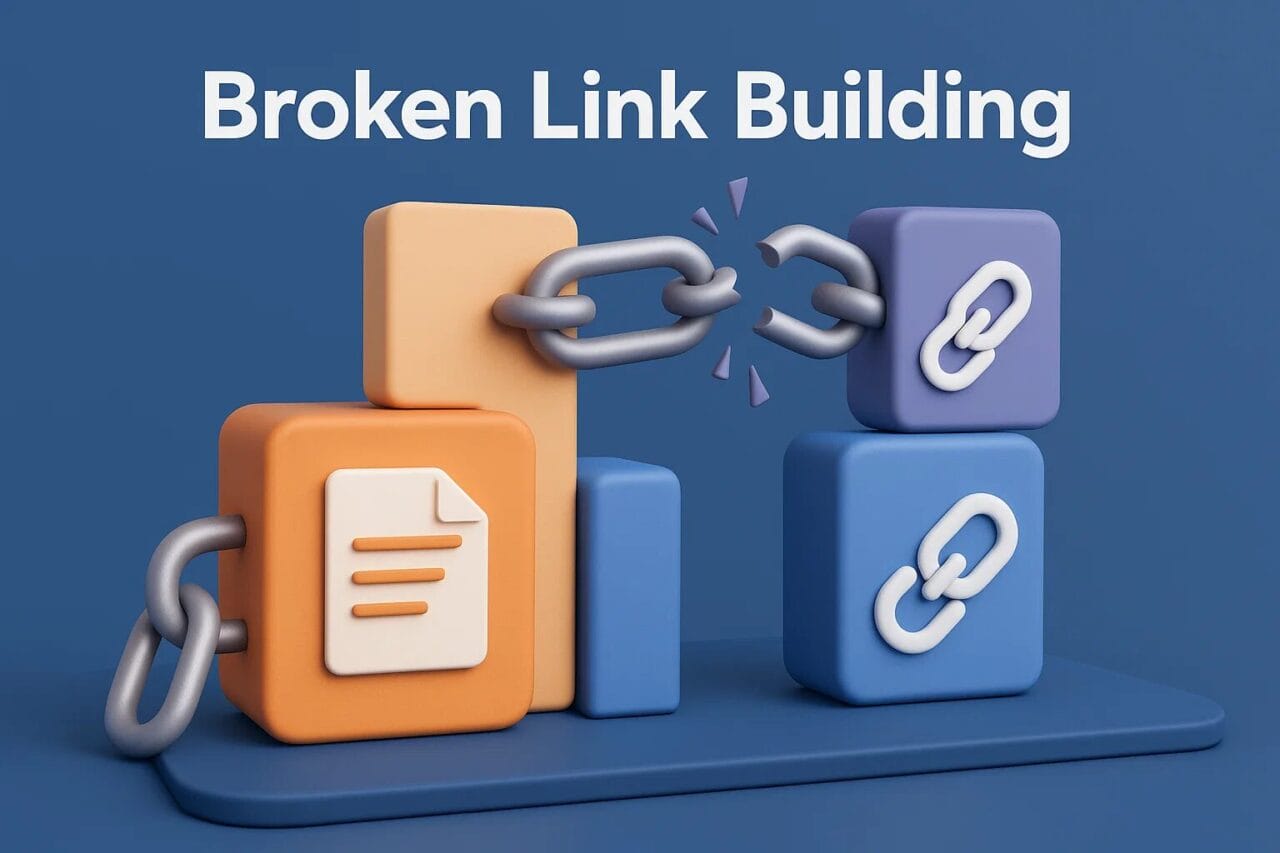Search algorithms change faster than ever, which is why link building remains one of the few long-term strategies that still drives real results. But how we approach link building now is very different from the old ways. Buying many links, putting spam in blog comments, or trying to get listed in directories just doesn’t work anymore and can get you penalized.
Today’s link building focuses on being relevant, providing context, and having authority. It’s about getting the correct links from respectable sources, using methods that are smart, scalable, and moral. Below, we’ll discuss the approaches that work in today’s search engine world and the tools and partners that can support you in implementing them on a large scale.
Create Links with Content That Offers Solutions
The key to any lasting link-building plan is content that answers a real question or fixes a specific issue. If your content doesn’t help the reader, they won’t link to it. Many businesses still care more about quantity than quality, publishing lots of short blog posts that aren’t good enough to attract attention.
To really get noticed, you need to go further. For example, if you’re working in human resources technology, don’t just write a basic post like Tips for Hiring Remote Workers. Try something more useful and based on data, like How Remote Hiring Affects Employee Retention: A Data Study Across 500 Teams. This kind of content not only proves you’re an expert but also gives other publishers a reason to mention you.
Moreover, your content should be created to get links from the get-go. You can discover topics based on backlink opportunities by using tools to examine your competitors, and then arrange your content schedule around subjects that others will want to link to. Once it’s published, the next thing is to spread the word. Millenio.co.uk can assist you with this by identifying websites that are likely to mention your high-quality content and reaching out to them personally.
Additionally, the best content assets usually blend educational depth with practical like calculators, templates, or industry benchmarks. These things gain links right away and keep attracting them over time as resources that never go out of style. The more helpful your content is, the less you to to convince others of its value.

Use Digital PR to Secure Genuine Editorial Links
Digital PR is more than just writing guest posts or promoting content. It puts your brand directly into discussions in the editorial. Although some companies still only use press releases, they frequently don’t get meaningful coverage because they don’t have a real story.
The secret to successful digital PR is timing. You can become the resource for quotes, ideas, or data if your team can quickly respond to relevant news, like a policy change, market trend, or new regulation. Sending a timely pitch to the correct journalist could result in a mention in a major media outlet or industry publication, which both greatly increase link equity.
Consider that you operate in the financial technology space. If new lending rules are released, and you publish an analysis within 24 hours. You’ve created both value and an opportunity for backlinks if you then pitch it to financial publications. If you can’t run these quick, targeted efforts in-house, working with a strategic outreach partner can provide you with the advantage. Their team monitors media trends, builds journalist relationships, and creates campaigns that produce exposure and search engine value.
Brand positioning is also supported by digital PR, which ties link building to reputation. Your brand starts to occupy a position of trust by consistently appearing in sources, something that standard link-for-link or guest posting cannot achieve.
Guest Posts on Relevant, Quality Sites
A lot of people think guest posting is about creating content simply to get links. However, the value of guest posting is when you view it as a chance to build credibility and branding, rather than just getting a backlink.
When pitching guest content, think about what new viewpoint you bring to the table. Editors get a lot of generic pitches. Your pitch will immediately be noticeable if you can point to your experience, data, or case studies. For example, instead of creating a general piece on content marketing tips, a software-as-a-service founder can contribute How We Reduced Customer Churn by 34% Through Targeted Content. The audience is informed by this article, and the author’s knowledge is proven.
Remember that placing one article on a solid, relevant domain with real traffic is more valuable than having ten articles on websites with no audience. Platforms like Buildalink.io are focused on quality instead of volume as a result. They only put you in touch with reliable websites that accept well-written content, so you won’t waste time pitching to irrelevant or low-authority blogs.
A larger content strategy should include guest posting as well. Every piece should support your positioning, whether it emphasizes innovation, industry knowledge, or thought leadership. Trust is built not only on backlinks when guest content is done correctly, but also on trust.

Resource Pages and Curated Link Lists
Resource pages are frequently disregarded since they don’t appear fancy, yet they are very helpful, particularly in B2B and learning contexts. For guests wishing to learn more about a subject, a large number of universities, nonprofit organizations, and government websites maintain resource lists.
Let’s say a college offering a cybersecurity course may utilize your guide as a resource for students or instructors if your business has written a thorough tutorial on cybersecurity for small businesses. That’s another plus because it’s a link from a .edu domain, which carries weight with search engines.
In comparison to links earned through guest posts, these links also are more likely to stick. Since they are added as references on pages, they remain active for a longer period of time. Automation technologies help to find these possibilities and track communication history in order to increase placement rates.
Building resource links takes time, but the rewards are substantial. Your entire site’s authority can be from a single.edu or.gov backlink, and they frequently stay up for years without needing to be renewed after they are created.
Broken Link Building
One of the strategies that is most commonly underutilized is broken link building, particularly for content marketers who already manage a blog or learning center. The secret is to concentrate on niche-relevant pages that used to link to excellent resources but have since disappeared.
Here’s an illustration: imagine that a significant industry study from 2018 was removed, but a large number of blogs and business websites are still linking to it. You can create an updated version of that report, then reach out to those site owners and offer yours as a working alternative.
Sectors or technology industries are especially well-suited to this strategy due to the frequent changes in standards and regulations. The success rate is heavily influenced by how closely your content matches the original source and the caliber of your presentation.
When carried out carefully, broken link building also cultivates connections. Site owners value the support in updating their content, which opens doors for future partnerships and guest posting opportunities.

Competitor Link Audits and Replication
Learning from successful strategies and making them better is the goal of copying a competitor. Examine competitor profiles and watch for two things:
- Which domains link to them frequently?
- What kinds of content draw those links?
For example, it is a signal that publishers in your space appreciate those formats. If multiple competitors are linking to case studies or beginner guides. Produce a version that is superior and more up-to-date after they have been identified, and then get in touch with the same or comparable websites.
Make your version stand out by including fresh data, images, or a viewpoint that others have not. Don’t claim to be superior with your outreach; just describe what’s fresh or updated. Editors value helpful contributions over blatant self-promotion.
You can identify link-building changes early and improve your plan before the rest of the market does by keeping track of competitor trends every quarter.
Niche Directories and Business Listings
Niche directories can offer value, not just for SEO but also for referral traffic when carefully selected. The trick is to concentrate on quality and relevance, rather than volume. A directory likely has active users browsing it if it appears in Google search results for your product category.
Look for curated listings and stay away from generic websites. For instance, an artificial intelligence business ought to try to be included in listings of top AI vendors, incubator ecosystems, or venture capital portfolio listings. These placements frequently come with dofollow links and are capable of transferring considerable authority.
Consistency is also essential. Make sure your name, address, and phone number information is consistent across every platform. Your local search presence may be weakened by small differences.

Be Careful About Link Partners
It’s a mistake to accept every backlink opportunity. A single link from a toxic domain can lower your domain’s search engine ranking, especially if that domain belongs to a PBN or spam network that is well-known.
Ask yourself the following questions when assessing a potential link opportunity:
- Would I be pleased to show this to a journalist or client?
- Does this website rank for something significant?
- Is its traffic falling or stable?
It’s better to decline a link than to risk future penalties, even if it seems appealing. A careful vetting process protects your long-term search engine health and saves time that would otherwise be spent on cleanup.
Scale With the Right Tools
Building ten excellent links manually each month is doable. Building 50 is not; at the very least, not without. A reliable platform makes every project clear by centralizing your campaigns, messages, and performance tracking.
You can with the appropriate system:
- Keep track of every exchange you have.
- Assign and oversee guest content.
- Verify anchor distribution and live status
- Evaluate results and return on investment
Platforms such as Buildalink.io make this feasible by combining publisher relationships, outreach project management, and in one location. It’s not about replacing people; it’s about giving them the structure to work efficiently and strategically.

Conclusion
Link building is no longer about chasing numbers. It’s about establishing lasting authority, relevance, and trust. An editorial backlink from a reliable publication is frequently more effective than one hundred bogus ones could ever be at increasing visibility.
The tactics that truly work, creating problem-solving content, using timely public relations, and conducting resource-driven outreach, require effort, but they all add up over time. With consistency, a clear strategy, and reliable partners like Millenio.co.uk and Buildalink.io, your brand can build a web presence that lasts.
True authority takes time to develop, but once it is, it becomes one of your best long-term.
